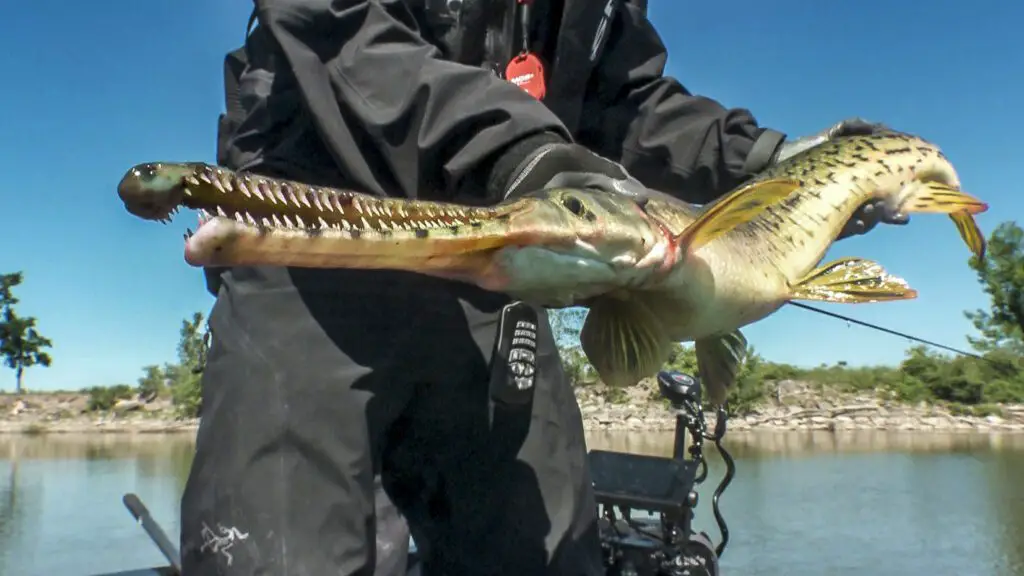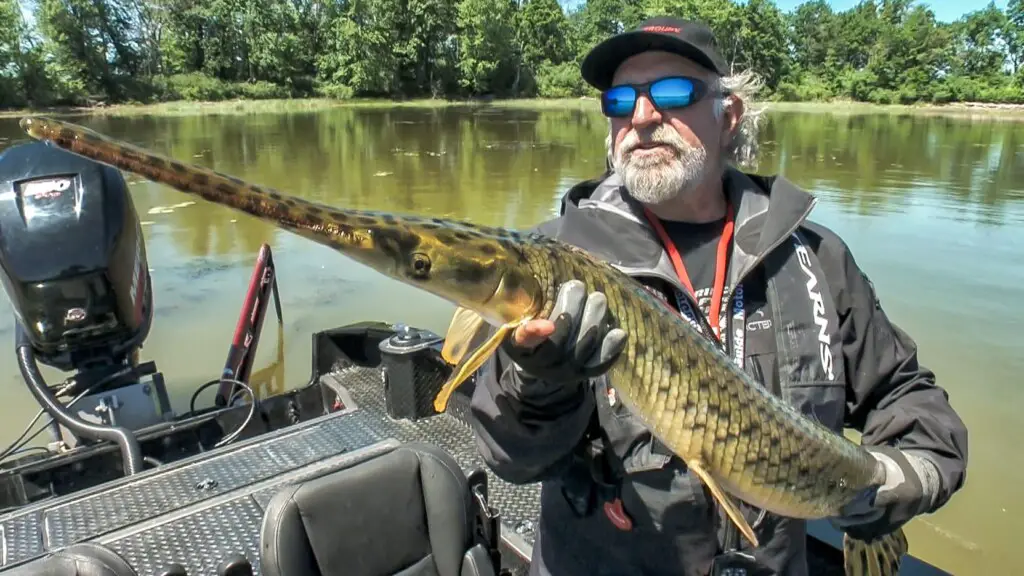Did you know that, although it may look like something from the Jurrasic period, the Longnose Gar isn’t actually all that rare?
What is a Gar?

The resilient Longnose Gar (Lepisosteus osseus) is referred to by some as a “living fossil”.
This fish has all but escaped evolution and is built for survival with armour-like diamond-shaped scales, a row of razor-sharp teeth, and an air/swim bladder that allows it to survive in low-oxygen water by collecting air from the surface.
Oddly enough, the Longnose Gar is not the only species of freshwater fish to make these strange evolutionary adjustments, with two other species of gar, the Aligator Gar and Shortnose Gar belonging to the same family.
Thankfully for those who like to swim, the Alligator Gar is only found in the lower Mississippi River Valley of the United States.
The Range of the Longnose Gar
Being such an adaptive fish, this incredible species can be found gulping air at the surface of streams, rivers, reservoirs, and bayous throughout North America – all the way from the St. Lawrence to the Rio Grande in Mexico.
Aside from the St. Lawrence and Ottawa Rivers, Ontarians can also find healthy populations of Gar living in all but one of the Great Lakes: Lake Michigan, Huron, Erie, and Lake Ontario.
Where to Find Longnose Gar
Though the camouflage pattern of the Longnose Gar can keep them fairly well hidden, their preference for shallow water makes them a relatively easy species to find. And, once an adventurous angler stumbles upon one Gar, it’s not uncommon to see a hundred or more of these top predators cruising the surface or gulping air with their distinctive long snouts.
These major predators tend to prefer areas with weed growth as they cruise and hunt schools of baitfish. Areas that receive direct sunlight are typically the preference as the Longnose Gar prefers much warmer water than many of the species it shares the water with. This makes late-spring/midsummer the peak of Gar season, with those first few hot and sunny days providing some of the best Gar action of the year.
Gar Fishing

Managing to hook, net, and hold one of these creatures is the closest thing an angler can do to travelling back in time millions of years!
Although many anglers put Gar in the “trash fish” category, anyone who has ever hooked one knows they are worthy of a much kinder distinction.
As mentioned above, Gar prefer shallow water and can often be spotted from above. This makes an incredible species to sight-fish for and can provide anglers with a uniquely northern version of “flats fishing”.
To start, anglers should approach areas slowly using their trolling motor and avoid casting until a fish is spotted. Once spotted, make cast your bait to where the fish is headed, not where it is sitting, and watch it as it approaches.
Anglers can Gar fish using a variety of different techniques and both conventional and fly anglers can get in on the action. On a previous episode of the Fish’n Canada Show, Ang and Pete put some of their bass baits to the test to land Gar in the Ottawa River. As seen in this episode, however, penetrating the Gar’s bony mouth is no easy task and the boys had to do some serious experimenting with treble and stinger hooks until they found the winning formula.
Even then, landing these fish with traditional baits is no easy task!
To adapt to the Gar’s toothy mouth, some gar anglers abandon the hooks altogether and craft what are known as Rope Flies. As the name would imply, these are crafted using a strip of nylon rope attached to a popper or sinking head. Lacking any hooks, the nylon rope does all the work in this unique style of bait as its fibres tangle in the teeth of the fish and hold them much better than traditional hooks.
One note about using Rope Flies is to be sure to remove ALL of the rope fibres from the fish’s mouth before releasing them back into the water. Even just leaving a few strands can be enough to prohibit the fish from fully opening its jaw and could prevent it from eating.

These prehistoric fish are just another reason to Go Fish in Ontario.




